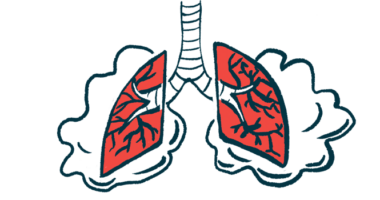Higher Blood Levels of Tiny Molecule May Be Linked to How CF Affects Girls, Study Suggests

Girls with cystic fibrosis (CF) under the age of six have higher levels of a tiny RNA molecule, miR-885-5p, in their blood compared with boys of the same age, which could be linked to the worse clinical outcomes normally seen in women with CF, a study suggests.
The study, “Plasma microRNA levels in male and female children with cystic fibrosis,” was published in the journal Nature Scientific Reports.
While therapy advancements that have increased life expectancy for both men and women with CF, women tend to have more severe symptoms than men.
Women with CF tend to have poorer lung function, experience a higher number of disease exacerbations (symptom worsening), and show signs of Pseudomonas aeruginosa — the bacteria responsible for most lung infections among those with CF — earlier in the course of the disease.
It’s not clear whether this gender gap is also present in children.
Researchers in Ireland collected and analyzed blood samples from six girls and six boys with CF, ages 1-6, to measure the levels of microRNAs — a class of RNA molecules that can control the activity of certain genes.
The presence of microRNAs in body fluids, such as blood, has been associated with disease stages in several cancers, highlighting their potential as accessible disease biomarkers. “Molecular biomarkers that are prognostic for lung disease progression could serve, in support of clinical examination, to allow earlier and hence more effective intervention strategies,” the researchers said.
Abnormal levels of microRNAs have also been detected among those with CF.
Researchers identified 118 microRNAs after taking blood samples from all 12 children. They found no significant differences in the number of these molecules between girls and boys.
They compared these microRNAs to those identified in six previous studies profiling microRNAs in healthy adults. More than half of all identified microRNAs had been described in at least four of these studies, and only five were not reported in any of them.
The 10 most abundant microRNAs identified had all been detected in previous studies profiling microRNAs in the blood.
The levels of two particular microRNAs — miR-885-5p and miR-193a-5p — were significantly higher in blood samples from CF girls compared with boys. A follow-up test showed that only miR-885-5p was significantly higher in girls.
Researchers then investigated whether the biological targets of miR-885-5p could play a role in CF lung disease, or explain the gender gap associated with the disorder.
Their analysis showed that miR-885-5p targets are involved in the control of cell migration, motility, and fibrosis (tissue scarring).
Data also suggested that RAC1, a Rho GTPase known to regulate the trafficking of CFTR (the channel protein that is defective in CF), is likely involved in miR-885-5p-regulated pathways.
Overall, “we have recorded significantly elevated levels of miR-885-5p in the plasma of female versus male children with CF, and the data suggest RAC1 may be a key molecule that functions via numerous different pathways, including cell migration and fibrosis, to aggravate CF pathogenesis [development] in females,” the researchers wrote.
The gender gap is “unlikely to be explained by the hormonal influences that are blamed for much of the gender gap in older females,” the researchers said. Further studies are needed “to test if increased levels of miR-885-5p in female CF plasma are representative of a functional difference, and therefore potentially useful in monitoring the course of the disease and the CF gender gap,” they wrote.







